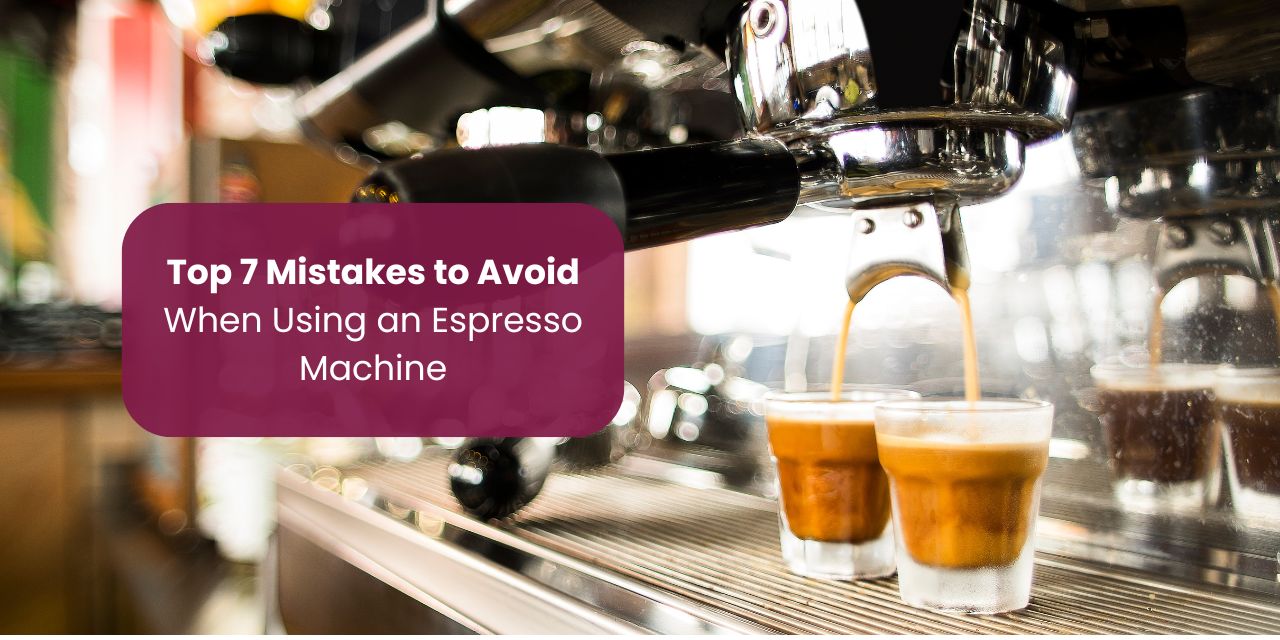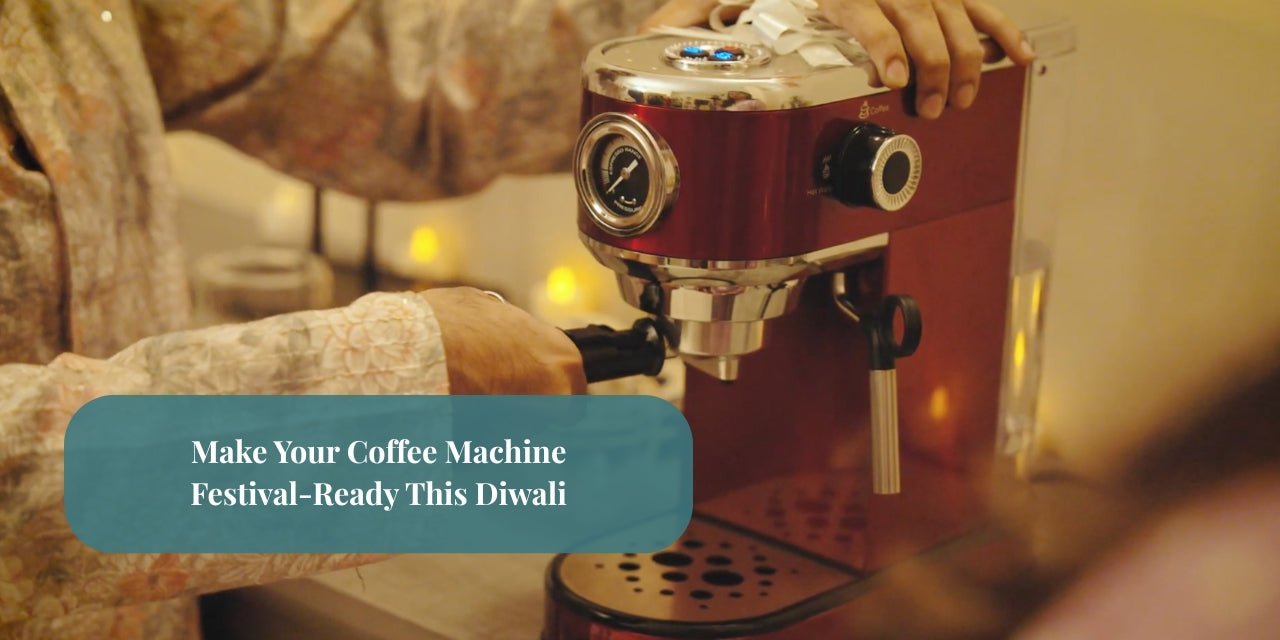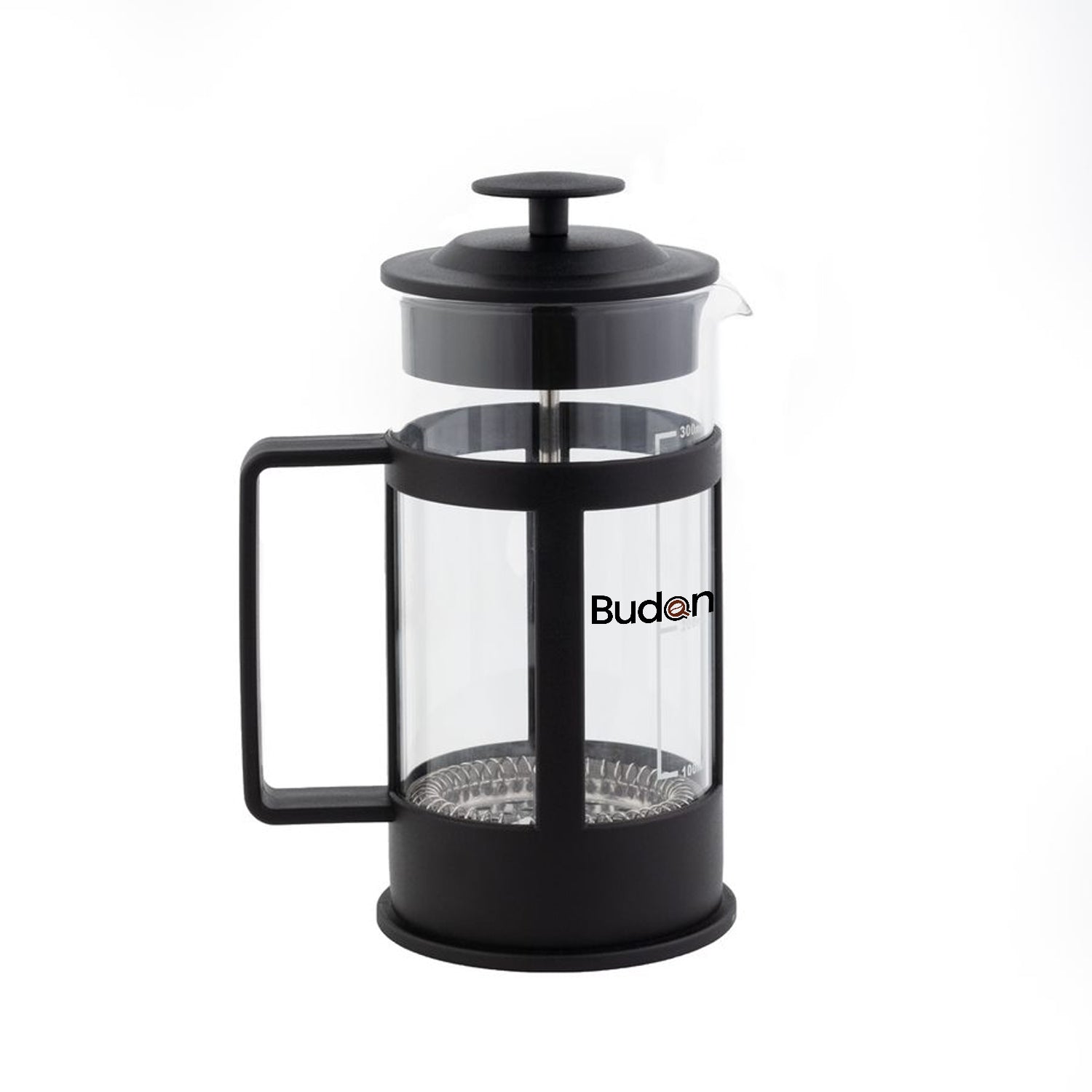There’s nothing quite like the rich, velvety taste of a perfectly brewed espresso. For coffee lovers, investing in an espresso machine is one of the most rewarding decisions. But here’s the catch: even with a great machine, small mistakes can ruin your shot, leaving it bitter, sour, or weak.
Learning to avoid these pitfalls is the key to pulling café-quality espresso at home. In this guide, we’ll break down the top 7 mistakes people make with espresso machines—and how to fix them for consistently delicious results.
1. Using Stale or Poor-Quality Coffee Beans
Why it’s a mistake:
Espresso is only as good as the beans you use. Pre-ground coffee or beans that have been sitting around for months lose their aroma and oils, leading to a flat and lifeless cup.
How to avoid it:
-
Always buy freshly roasted coffee beans, ideally used within 2–4 weeks of roasting.
-
Grind beans just before brewing to lock in freshness.
-
Store coffee in an airtight container away from light, heat, and moisture.
Pro Tip: Look for local roasters or specialty coffee brands. Fresh beans are the foundation of café-quality espresso.
2. Ignoring the Grind Size
Why it’s a mistake:
Espresso requires a fine and consistent grind. Too coarse, and water flows too quickly, producing sour, under-extracted shots. Too fine, and water struggles to pass through, causing bitter, over-extracted espresso.
How to avoid it:
-
Invest in a burr grinder, not a blade grinder. Burr grinders ensure uniform particle size.
-
Adjust grind size depending on your machine and beans.
-
Follow the golden rule: a double shot should brew in 25–30 seconds. If it’s faster or slower, adjust your grind.
Pro Tip: Dialing in grind size is a process. Keep notes when you switch beans—it saves time in the long run.
3. Incorrect Tamping Pressure
Why it’s a mistake:
Tamping compresses coffee grounds in the portafilter. If you tamp unevenly or too lightly, water channels through weak spots, leading to uneven extraction. If you tamp too hard, water struggles to flow, resulting in bitterness.
How to avoid it:
-
Tamp with consistent, firm pressure (about 30 pounds).
-
Keep the tamper flat and level for even extraction.
-
Use a tamper mat or station to ensure stability.
Pro Tip: Consistency matters more than strength. Aim for the same pressure every time rather than worrying about exact weight.
4. Skipping Preheating
Why it’s a mistake:
Espresso extraction depends on stable water temperature. Using a cold machine or cup can drop the temperature, making shots weak or inconsistent.
How to avoid it:
-
Run a blank shot (hot water through the group head) before brewing.
-
Preheat your portafilter by locking it in for a few seconds.
-
Warm your cups with hot water or on the machine’s cup warmer.
Pro Tip: Temperature stability is what separates good espresso from great espresso. Never skip preheating.
5. Neglecting Regular Cleaning
Why it’s a mistake:
Old coffee oils and residue can build up inside your machine, clogging filters and affecting flavor. A dirty espresso machine produces rancid, bitter-tasting shots.
How to avoid it:
-
Wipe the portafilter and basket after every use.
-
Backflush the machine daily (if applicable).
-
Descale your machine every few months, depending on water hardness.
-
Always purge the steam wand before and after frothing milk.
Pro Tip: Make cleaning part of your brewing ritual. A clean machine = consistent, fresh espresso.
6. Using the Wrong Coffee-to-Water Ratio
Why it’s a mistake:
Espresso is a precise brew. Too much coffee or too little water, and your shot turns bitter. Too little coffee or too much water, and it’s weak and watery.
How to avoid it:
-
Follow the standard espresso recipe:
-
Dose: 18–20g coffee for a double shot
-
Yield: 36–40g liquid espresso
-
Time: 25–30 seconds
-
Use a digital scale for accuracy. Eyeballing leads to inconsistency.
Pro Tip: Ratios are a starting point. Once you master them, tweak slightly for personal taste.
7. Treating Milk Frothing as an Afterthought
Why it’s a mistake:
For cappuccinos and lattes, poorly frothed milk can ruin the drink. Overheated milk tastes burnt, while big bubbles make it foamy instead of silky.
How to avoid it:
-
Use cold milk and a chilled pitcher.
-
Purge the steam wand before starting.
-
Submerge the wand just under the milk’s surface to create microfoam.
-
Stop steaming at around 65°C (warm to the touch but not scalding).
Pro Tip: Listen for a gentle hissing sound, not loud screeching. That’s the secret to smooth, velvety milk.
Bonus Mistake: Expecting Instant Perfection
Espresso making is an art. Many beginners get discouraged after pulling a few bad shots. But every mistake is a step toward mastery.
How to avoid it:
-
Be patient and experiment.
-
Make one change at a time (grind size, tamp pressure, dose).
-
Keep a brewing journal to track results.
Pro Tip: Even professional baristas dial in their shots daily. Don’t chase perfection, chase progress.
Final Thoughts
Using an espresso machine is one of the most rewarding ways to enjoy coffee at home. But small mistakes—like using stale beans, skipping preheating, or neglecting cleaning—can make the difference between a bitter shot and a café-quality espresso.
By avoiding these 7 common espresso mistakes, you’ll save yourself frustration, elevate your brewing skills, and get the most out of your machine. Remember, the journey to perfect espresso is as enjoyable as the coffee itself.


























